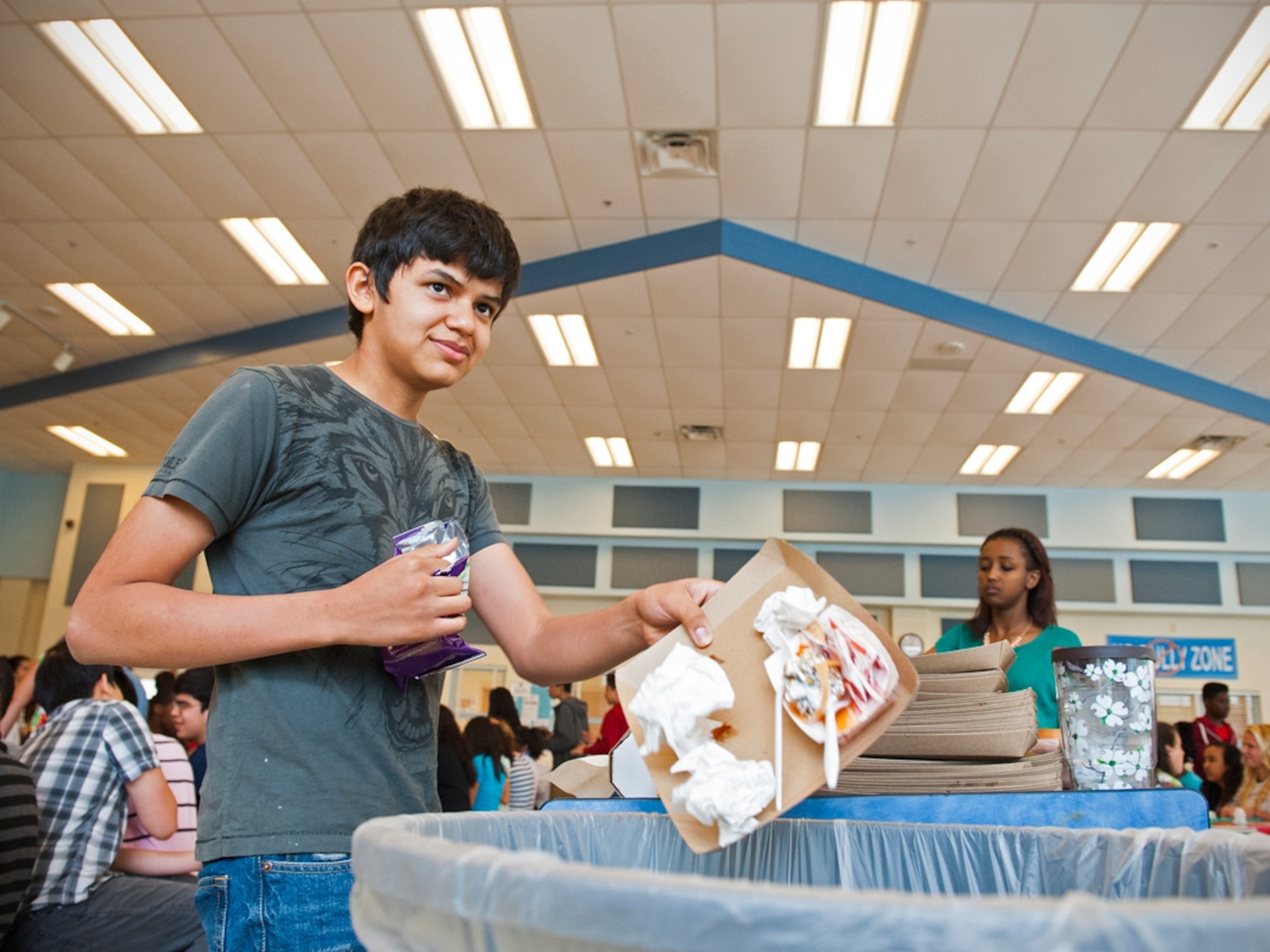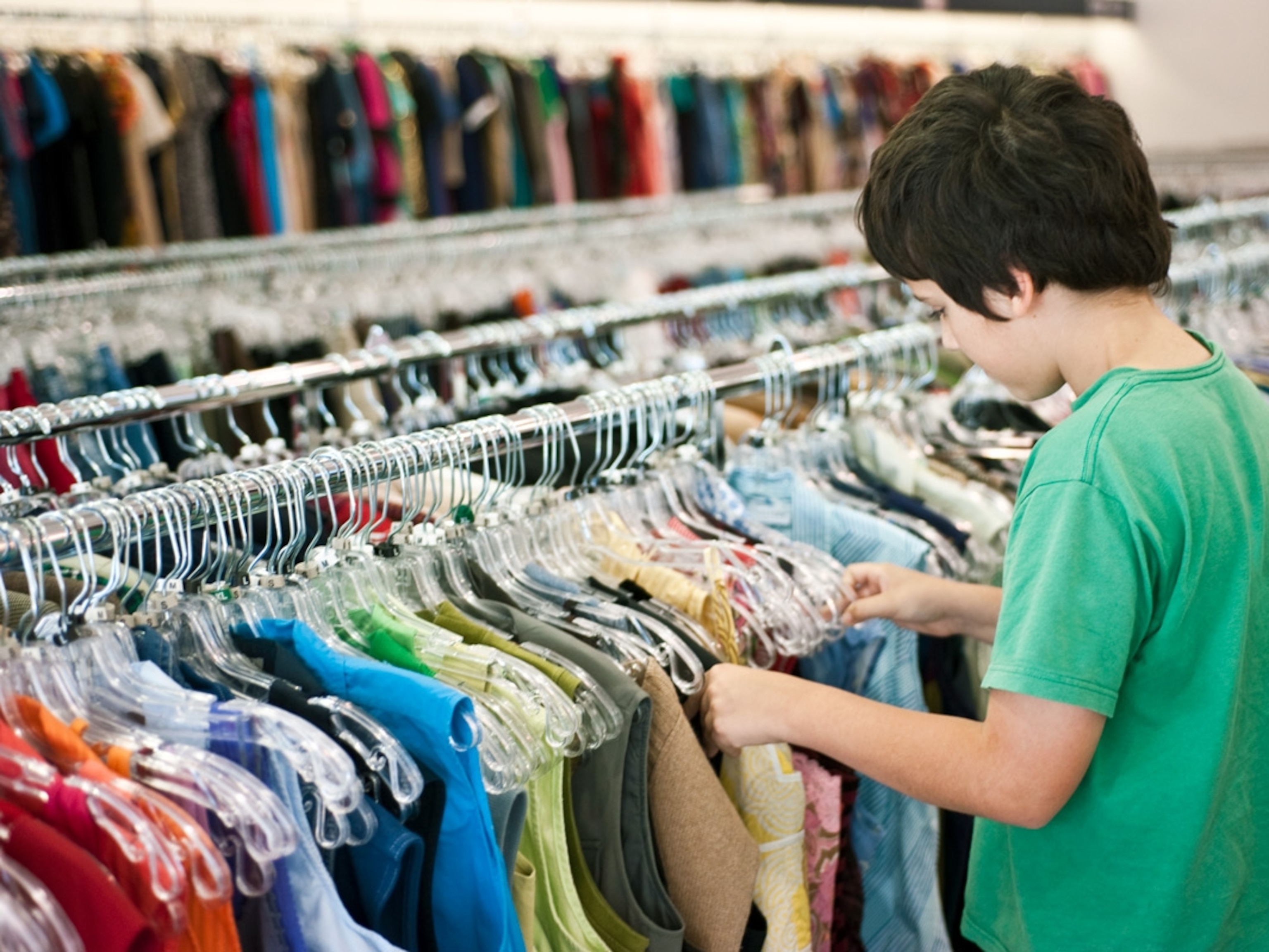
What kids really want to know about recycling
We’ve collected puzzling recycling questions from children around the country. The answers could help your family understand the process better.
Can you recycle a tissue? A rubber band? Tinfoil? When we asked kids for their questions about recycling, they did not disappoint. After all, just because children are excited to help the environment doesn’t mean they’re experts in the recycling process, too.
“Many kids are eager to help with recycling,” says Chrystelle Panatier, a fifth-grade teacher in Silver Spring, Maryland. “But they don’t always know the right place to put things, or where the recyclables go next. They see the truck coming to pick it up, but I don’t think they understand what happens from there.”
So we went straight to the source to find out what kids wanted to know and become better environmental stewards. (In case you’re wondering: Tissues go in the trash; rubber bands generally aren’t recyclable but they are reusable; and clean tinfoil can go right into your curbside bin—aluminum is infinitely recyclable.)
The following questions from real kids are ones that you might’ve heard from your own children—plus you might find the answer to something you’ve been wondering yourself.
How much is recycled each day? (fourth graders, North Kingstown, Rhode Island)
According to the most recent statistics from the Environmental Protection Agency, 69 million tons of waste were recycled in the United States in one year, which works out to about 1.6 pounds per person each day. But in the same year, 146.1 million tons of waste were sent to landfills.
How do recycling machines work? (Autumn, second grade, Overland Park, Kansas)
Drivers haul curbside recycling to a local materials recovery facility (MRF) that uses machines and people power to sort the items into whatever they’re made of, like glass or plastic or paper. Why? The MRF can sell the separated items to companies that will turn them into new products.
“A glass manufacturer doesn't want paper in with their glass, and a paper manufacturer doesn’t want glass in their paper,” says Randy Hartman, an expert in waste management and a senior director at Keep America Beautiful. “Recycling is all about getting the right materials in the right place at the right time.”
Curious kids can probably see the machines in action at your local sorting center. “A lot of MRFs actually have observation rooms where you can go and safely see the process,” Hartman says. Or show children this kid-friendly cartoon that illustrates how a recycling center works.
Why do people make recycled stuff into a cube shape? (Smith, second grade, Overland Park, Kansas)
After the items are sorted at the MRF, they’re formed into blocks of material called bales. The cube shape allows the materials to be stacked and moved by forklifts. Manufacturers purchase these bales and process the materials at other facilities. Paper is washed to remove the ink, then crushed and rerolled; metal is melted and reformed; plastic is shredded and melted down. Then the material is used to make new products.
What happens if you put something wet in the recycling bin? (Miles, second grade, Lynnwood, Washington)
Wet stuff—especially wet paper—can be a problem when machines try to separate the recyclables. “Think of what a wet newspaper does versus a dry one,” Hartman says. “At the collection site, it’s sticky and gets tangled up on other materials or even around the wheels.”
Can a COVID-19 mask be recycled? (Second graders, Lynnwood, Washington)
Yes! But not in your curbside bin. The recycling company TerraCycle will accept PPE like masks, gloves, and safety glasses (though you have to pay for the box).
Why can’t I recycle Styrofoam? (fifth graders, North Kingstown, Rhode Island)
Actually, Styrofoam (or its real name, expanded polystyrene foam) is recyclable—just not at the curb. That’s because it’s about 95 percent air and therefore very light and bulky. That makes it expensive for the MRFs to collect, transport, and process the material.
“Recyclers are also thinking about environmental impact in addition to the cost when deciding what to accept,” Hartman says. “For foam, the emissions and cost to move it is higher than the benefit of recycling it.”
If your kid is concerned about all those foam lunch trays, encourage the school to investigate companies that are coming up with creative solutions. For instance, a company in Oregon collects the foam and has special machines that can turn it into new products. (Here’s how to help your kids make big eco-friendly changes at their school.)
What happens if I recycle something that can’t be recycled? (fifth graders, North Kingstown, Rhode Island)
Recyclers have a word for that: wish-cycling. Non-recyclable items that end up at an MRF are separated and usually sent to a landfill or an incinerator.
But the people working there don’t always catch everything. Some items, like batteries, can cause fires; tangly things like hoses, holiday lights, plastic bags, and electrical cords can damage machines.
The good news is that lots of these items are recyclable, just not in your curbside bin. (For example, many grocery stores collect plastic bags for special recycling.) Help your kid figure this out by exploring this website. You can also check your local rules and recycling options by putting your zip code into the website to see nearby recyclers.
Why don’t more schools have recycling programs? (Cadence, 11th grade, Billings, Montana)
Schools don’t always have the money or people to handle a recycling system. “Who’s going to collect it? Where will they store it before collection?” Hartman says. “It’s a long-haul commitment that takes a lot to sustain on your own.”
But that doesn’t mean kids shouldn’t try. This guide from the environmental nonprofit Action for Nature can give older children some great ideas to bring to school officials. “We’ve seen many successful volunteer recycling programs, so it’s certainly possibly to create one,” Hartman says.
Why can’t I recycle a greasy pizza box? (fifth graders, North Kingstown, Rhode Island)
In most cases, you can! “It’s been a raging debate in the recycling community for a long time,” Hartman says. “But you actually can.”
You still have to check your local rules, though. All that gooey cheese and oil can be difficult to separate from the paper fiber, plus some facilities don’t want any extra pizza crust attracting pests to the MRF. If your local MRF doesn’t accept the greasy bits, just rip off the clean cardboard and add it to your bin.
How do you recycle a plastic water bottle? (Sawyer, first grade, Vero Beach, Florida)
Plastic water bottles can go into your curbside recycling bin, but most end up in landfills or as litter. According to the EPA, only about 30 percent of plastic bottles are actually recycled.
Just like Styrofoam, plastic bottles aren’t as profitable to recycle because it’s usually cheaper to create new, raw plastic. But you can help: Purchasing products made of 100 percent recycled material increases demand for the product.
And of course, we have to plug reusable water bottles. “One of the other important steps that we sometimes forget is ‘refuse,’” Hartman says. “If there's an alternative that doesn't generate waste, then use that.”
What's it like driving a recycling truck? (Spencer, first grade, Vero Beach, Florida)
“You're sitting up really high and so you have a good view of the street," Hartman says. “It's disappointing when you only see one or two recycling containers set out for pickup. But the most exciting part is seeing kids wave and watch us as we pick up their recyclables. It’s a lot of fun.”



